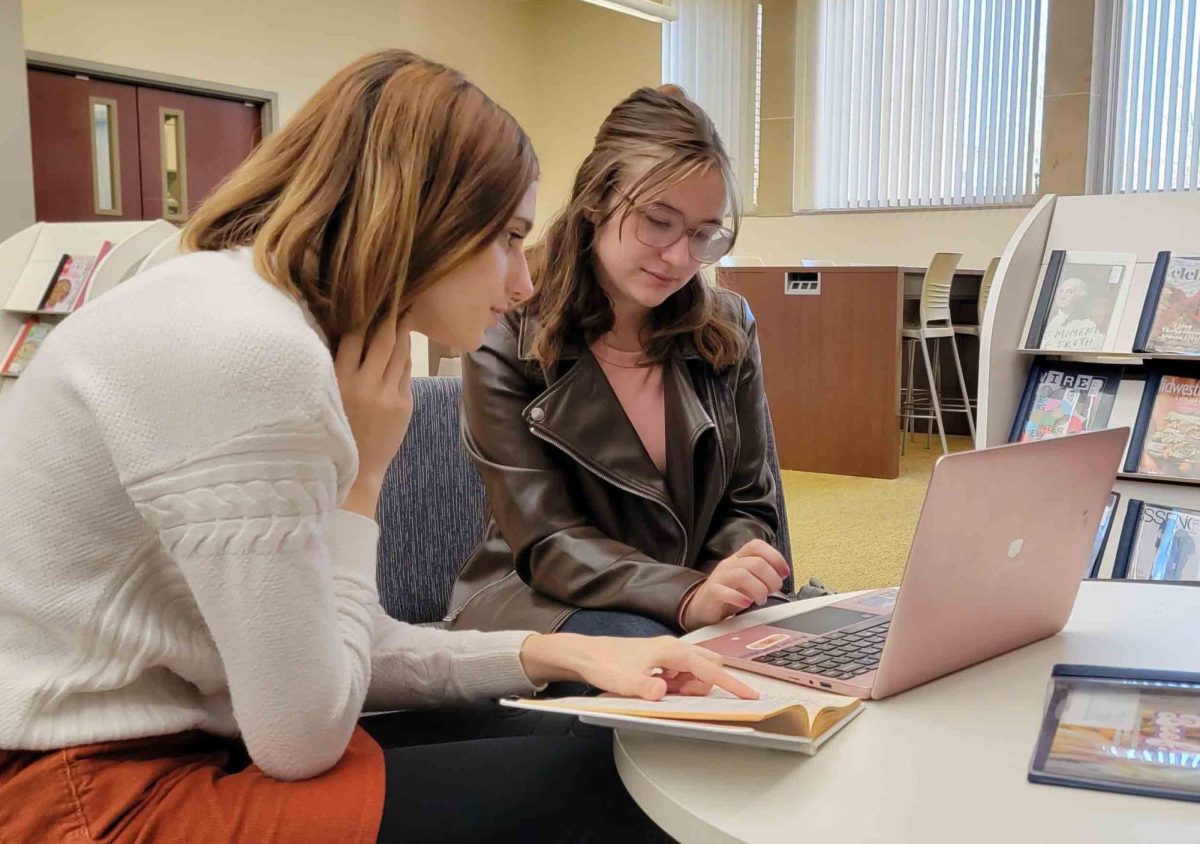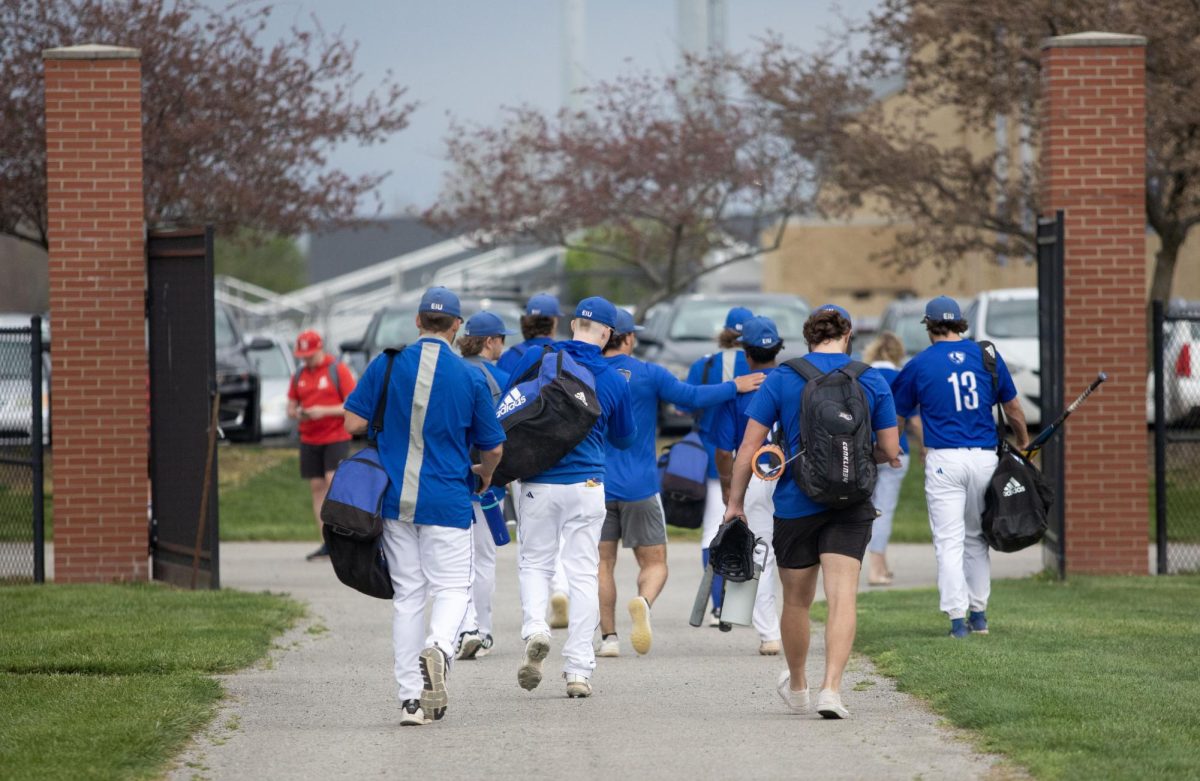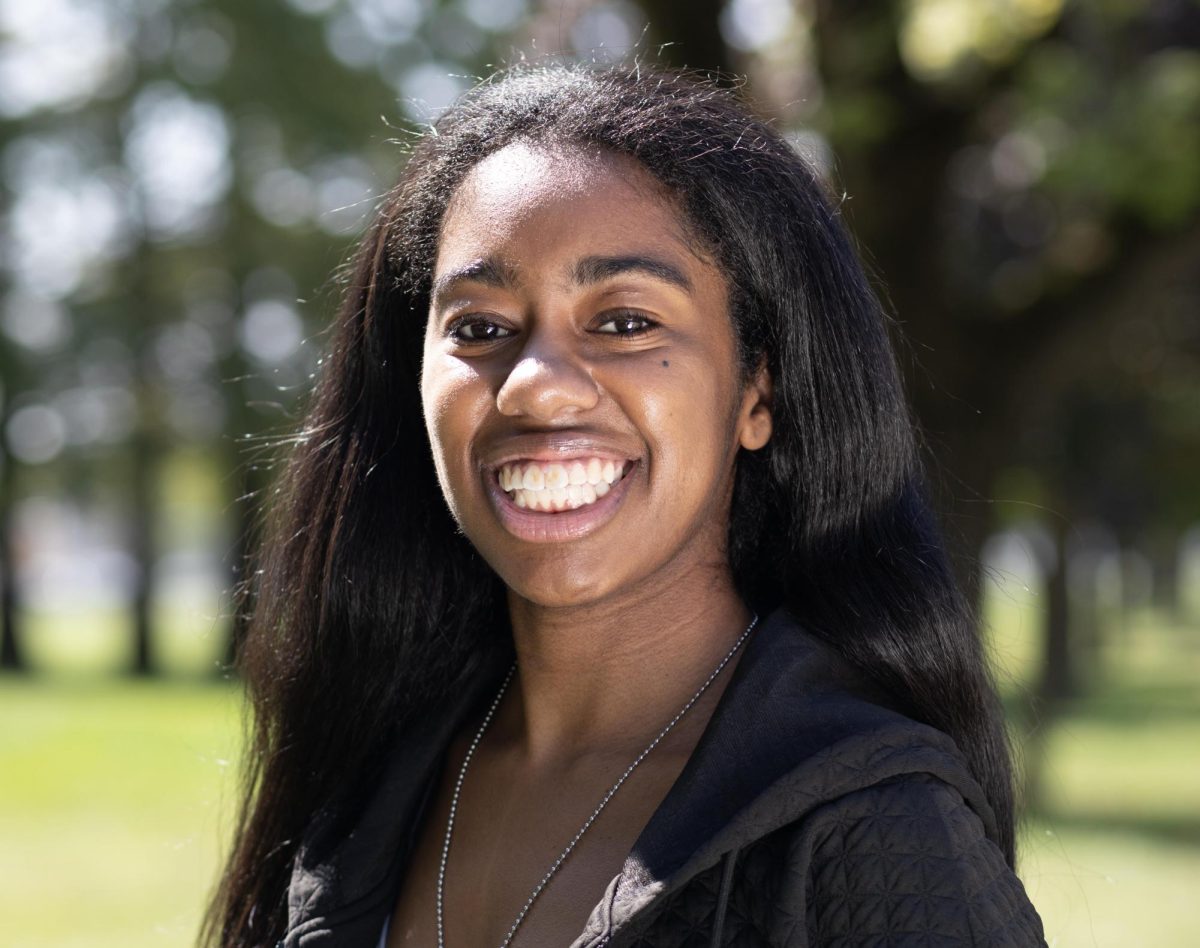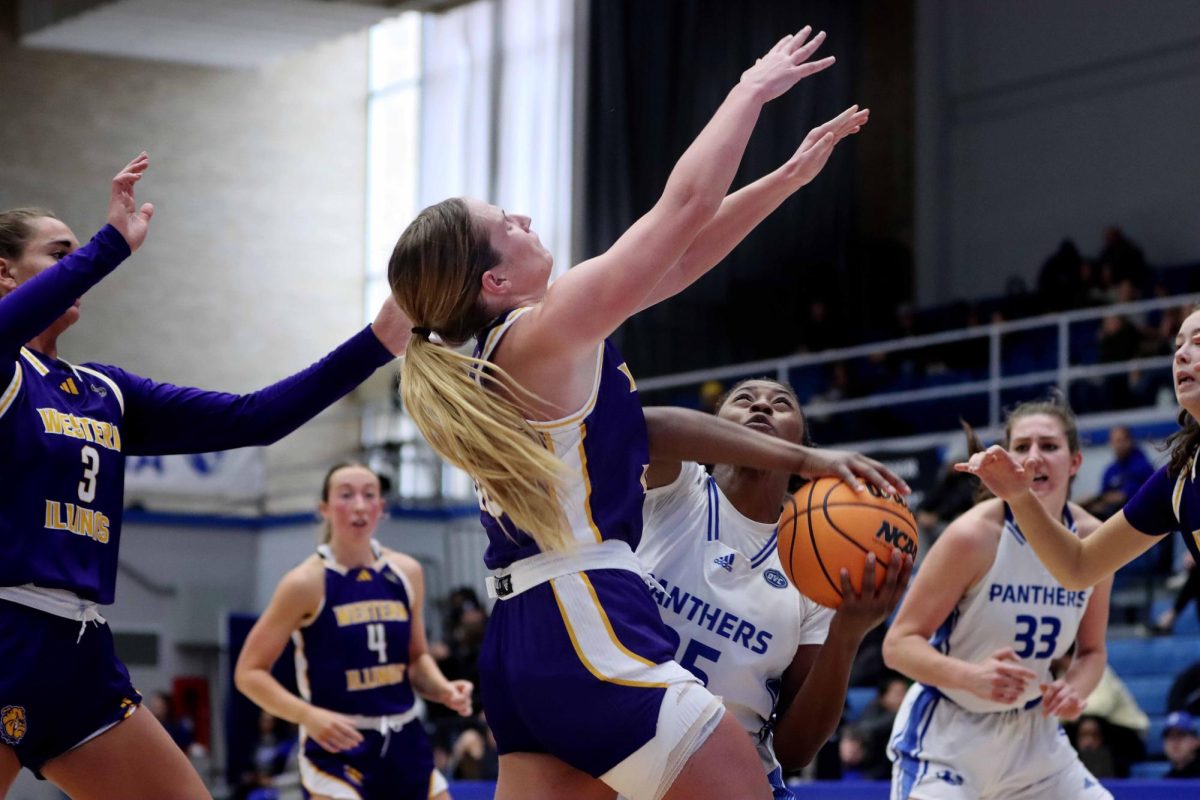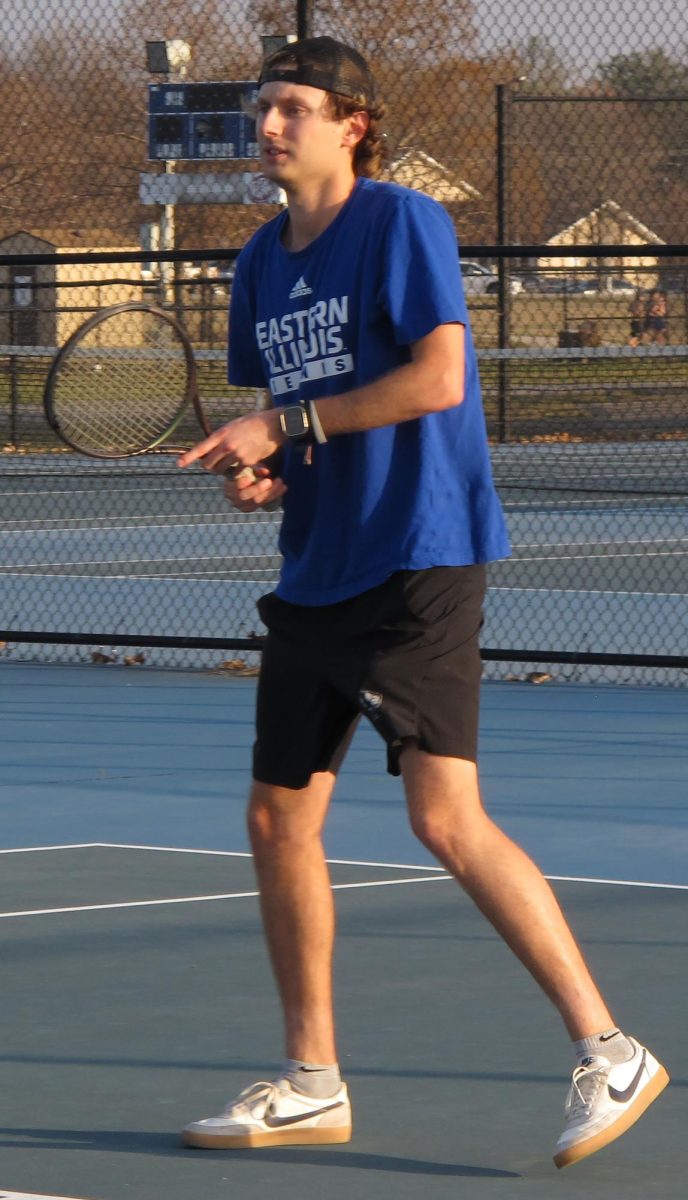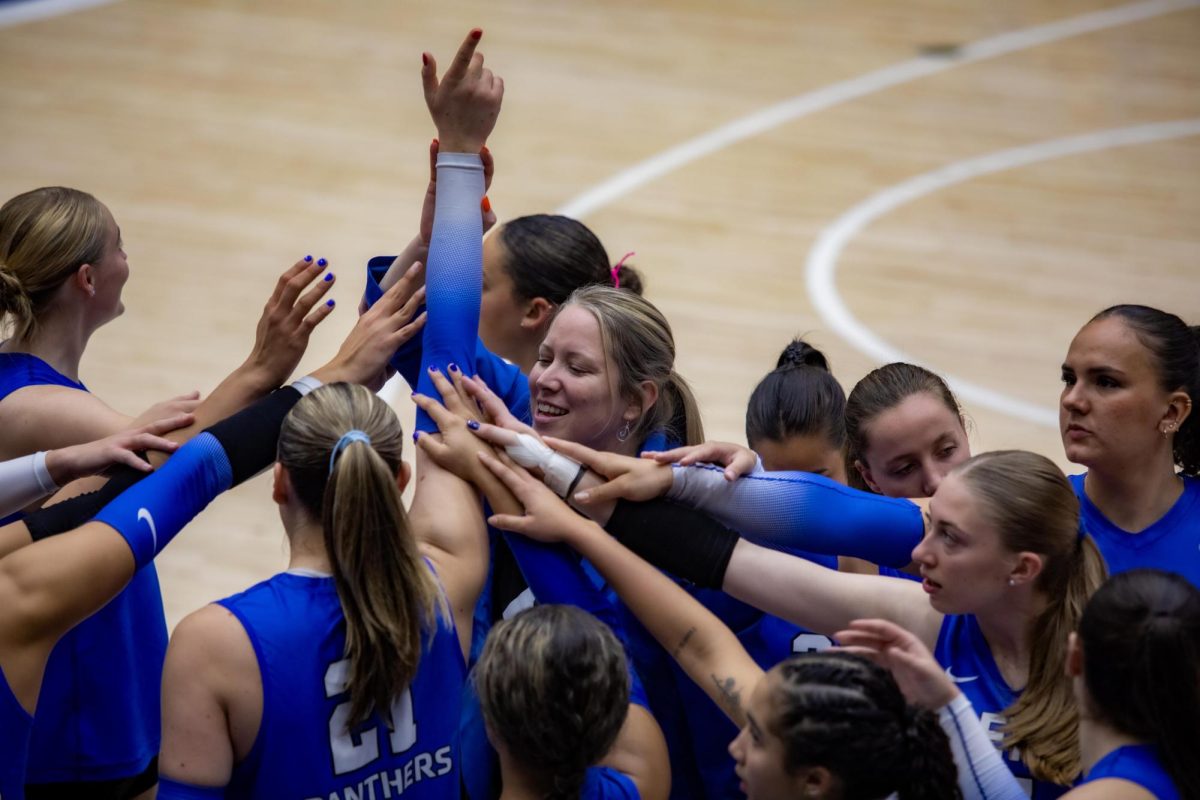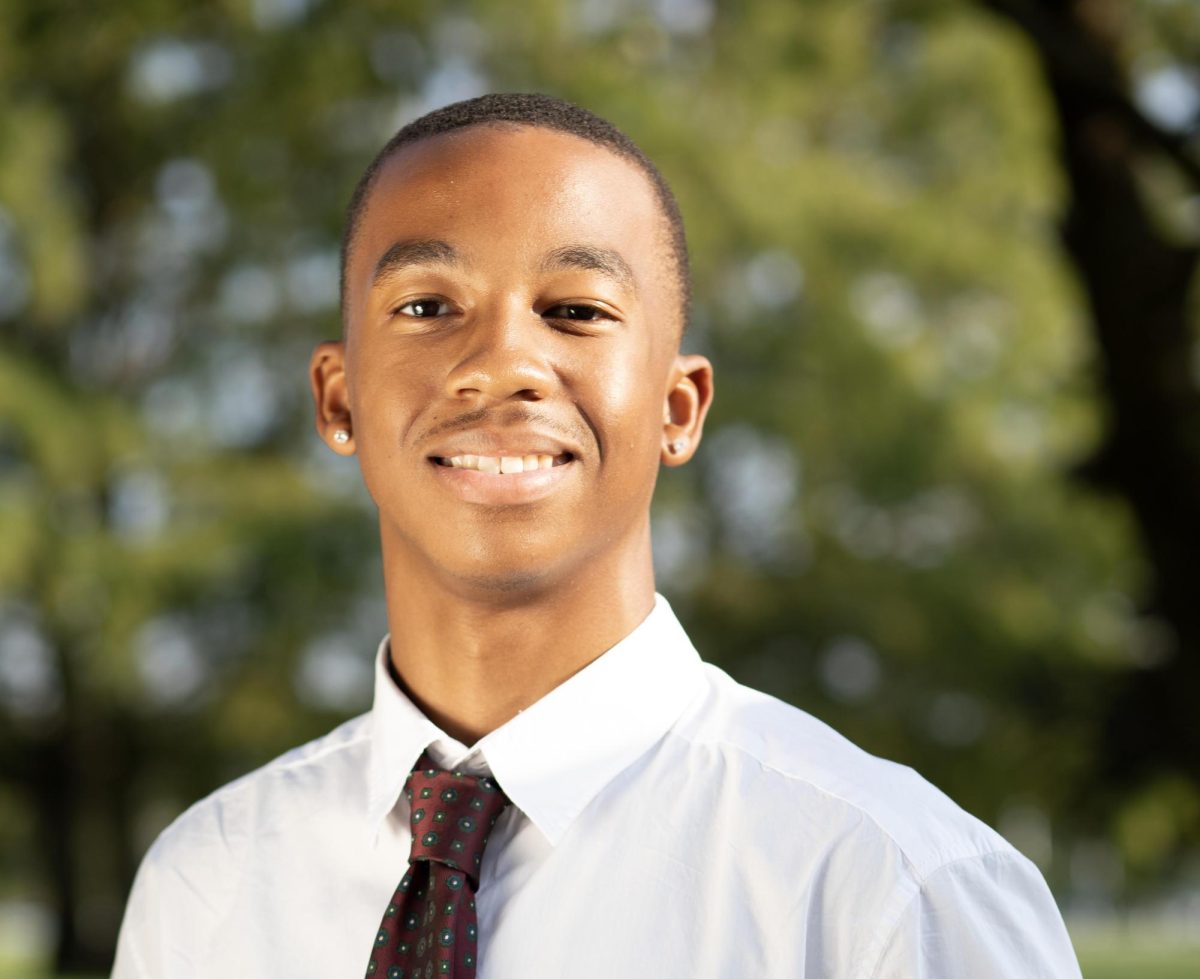Egypt study ends with dancing
Sounds of ancient song and dance filled McAfee Gym Thursday as members of the kinesiology department presented their last installment in “A Futuristic Look Through
Ancient Lenses: A Symposium on Ancient Egypt” series.
The lecture, “Ancient Egyptian Sports and Dance,” was preceded by closing words from Wafeek Wahby, a professor of construction technology, who began organizing the event more than two years ago.
“Everything, even good things, must come to an end,” Wahby said. “This symposium was meant to take us 5,000 years in the past, then 5,000 years in the future.”
Wahby said he wanted to end the five weeklong symposiums with the sport and dance presentation, knowing that it would bring a different atmosphere and energy to the symposium.
“It has been said music is the gift of heaven to earth,” Wahby said. “We wanted a big, grand finale with the free mind of gymnastics.”
Jill Owen, chair of the department of kinesiology and sports studies, said the lecture gave her department a chance to show a different academic side students may not be familiar with.
“We don’t just play basketball and volleyball,” she said. “We do games from other countries and other cultures as well.”
Scott Ronspies, assistant professor of kinesiology and sports studies, said Americans today and Egyptians of the past valued many of the same qualities in physical activities.
“We’re still dancing and playing sport for the same reasons we did in 1,500 BC,” he said. “It’s for enjoyment, fitness, competition, and religious ritual.”
Ronspies said Egyptians advanced many elements of sport that are common place today, such as the concept of one team invading another’s territory and the idea of winners and losers.
“We owe a lot of how rules and regulations work to the Ancient Egyptians,” Ronspies said. “Opponents were held in high regard for their spirits and vigor.”
The wealth of information present on Egyptian sporting culture is not available for dance, Ronspies said.
“We know they were very good dancers,” he said. “But a painting doesn’t tell you much about how the dance was constructed or what it means.”
Ronspies said that unlike modern times, men and women did not dance in pairs and that most dances were performed as part of religious rites or ceremonies.
With tambourine in hand, Ronspies had his methods of physical education students perform their own interpretation of Egyptian dance as part of the lecture.
“Its our depiction of a dance celebrating the sun god Ra,” he said. “It’s not easy to dance in front of your peers and fellow students.”
In comparison, Ronspies showed the presence of dance in modern culture by using a clip from the 1984 film “Footloose,” where a young Kevin Bacon makes a plea to the city council to lift a ban on dancing in public.
“These kids want to dance for the same reason kids danced in 1,500 BC,” he said. “Nothing has changed in terms of why we express ourselves in terms of dance and sport.”
Wahby said that while he looks forward to future symposiums on the ancient world, he is happy to have successfully completed this first one.
“I’m breathing a sigh of joy,” Wahby said.
Andrew Crivilare can be reached at 581-2812 or ajcrivilare@eiu.edu.

